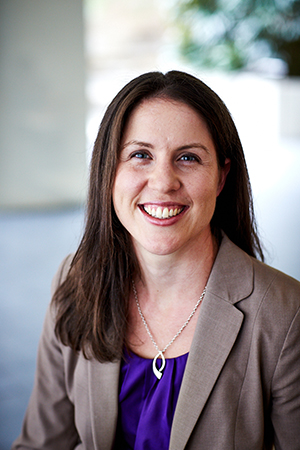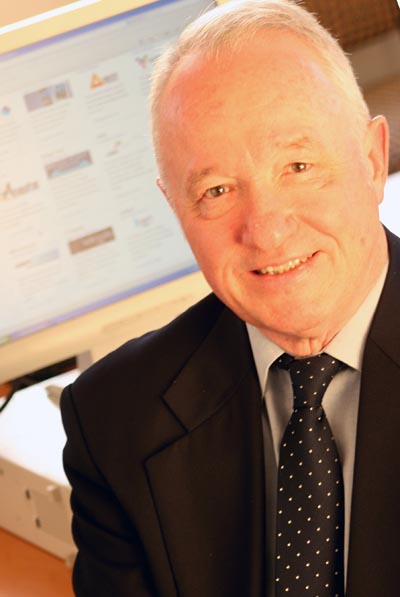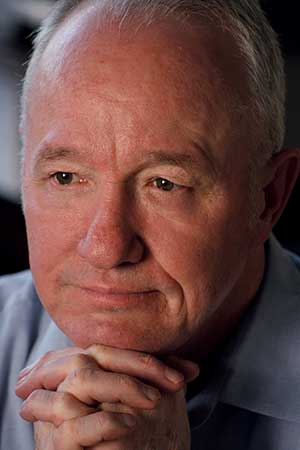INSIGHTS from Intuit Australia managing director Nicolette Maury >>
YOU HAVE probably been hearing for some time that technology is the answer to all your problems. That is certainly now true, at least for the admin side of your business.
Cloud technology has delivered on its promise of affordable, efficient IT infrastructure – for all.
You no longer have to be a huge enterprise to have sophisticated technologies that allow you to streamline your operations so you can get on with taking your ideas to market and providing the highest levels of customer service. 
Thanks to the cloud, small businesses now have access to specialised business software where you can turn functionality on and off, add storage as required and only pay for what you use on a monthly or annual subscription.
You’re rescued from the fear of software or hardware failures because your data resides in the cloud so you can access it anytime you want, no matter where you are, and benefit from automatic software updates.
More than this, however, it is the addition of mobility – smartphone and tablet usage – to this picture that is really helping smaller enterprises thrive.
Mobile entrepreneurs are differentiating themselves in the marketplace by having sales and customer information at their fingertips; preparing quotes and proposals in the field; invoicing on the spot; tracking and logging expenses; and managing projects on the move, whether they’re at a customer site, a café, at home or between appointments.
CLOUD ACCOUNTING – A LYNCHPIN FOR SME SUCCESS
Cloud accounting is becoming an essential part of the technology underpinning strong small businesses and is providing staggering time savings. In fact, according to recent Intuit research, 37 percent of businesses say they save 1-5 hours per week through automation and reduced data entry.
Here, time savings are generated through cloud accounting solutions like QuickBooks Online, where you only have to enter information once and it flows through an integrated structure reducing the administrative burden on SMEs.
Additionally, direct inputs from bank statements make expense reconciliations a breeze, while payroll, super and other rate updates automatically adjust via the cloud technology.
All of this means that an SME owner has an accurate state of play at their fingertips and can track who owes money, where stock is and so on, with secure access to financials from anywhere, on any device, at any time.
Cloud accounting software is also allowing small businesses to work effectively on the go.
For example, if a company has a field team or frequently works out of the office, job details, estimates and invoices can be quickly and accurately captured and sent to customers via their mobile devices.
The fast, personal response makes a real impact on customers and it means core business tasks don’t have to be replicated or done back in the office, saving time and improving cash flow.
ADMIN BECOMES A THING OF THE PAST
In the next five years, ‘administration’ as we know it will be gone and it will be cloud technology that facilitates the serious reduction of the ‘admin’ burden.
There will be no more laborious, repetitive, error-prone data entry or risk-laden hindsight. Owners of even the smallest businesses will be able to use the automated, real time information from their software for powerful financial management insights.
If you’re not bogged down by administrative work, you can remain focused on your business and on making sure you’ve got happy staff and customers.
HELPING BUSINESSES THRIVE IN THE CLOUD
At Intuit, we’re passionate about helping small businesses thrive. We spend more than 10,000 hours a year visiting customers in their homes and offices around the world to see how they use our products and identify how we can solve their biggest problems.
So we’ve designed our product from the ground up to be simple and intuitive to use. And because it’s a cloud solution, we are able to make helpful changes and additions to it whenever we identify a need.
We are putting powerful financial information at the fingertips of business owners.
Typically, large enterprises have been able to analyse their company data to make better business decisions, but these tools have been out of the price range of small businesses.
With QuickBooks Online, SMEs can now get that sort of foresight at the press of a button – they can spot trends in growth numbers, predict cash flow, identify their best customers and so on. Just one of the ways we help small businesses achieve their financial goals.
Once your accounts are in cloud, you can work with your accountant and/or bookkeeper on a ‘same data, same time’ basis. This means, the bottlenecks and risks of sending the ‘shoe box’ to your accountant once a year are removed.
Working as a team with your accountant, you’ll able to make smarter, faster decisions, identify and leverage new business opportunities – and even discover answers to questions that haven’t been posed yet.
As cloud technology develops and the connections between different software platforms that support small businesses strengthen, the power of the small business-accountant partnership will only strengthen to deliver better SME outcomes.
LINKAGES, INTEGRATION, PARTNERSHIPS – THE NEW BUSINESS ECOSYSTEM
The future is in the creation of products and services that work together perfectly to address the entire workflow for small businesses. With the average small business owner using up to 18 apps to run their business every day, it is essential that vendors, like Intuit, build seamless links between this array of software so they work together to support SME operations.
As such, you will increasingly hear about ‘vendor ecosystems’ which essentially represent IT partnerships that link the best of the best.
Software developers are focussing on their area of expertise and extending the power of their offerings with integration to other mobile, web-based apps, such as time and expense tracking, customer relations and billing.
These allow you to draw data from your accounting solution, such as a customer list for an email campaign, or accept updates like time entries or payments. We’re creating direct paths for small business profitability.
CLOUD DELIVERS SUCCESS
Are you reducing your chances of success by not getting on board with the latest technology developments?
It’s worth taking 30 minutes or so to trial one or two of the latest online accounting solutions. I’m confident you’ll find it life changing as you’ll end up having more time to spend on the things you love doing.
The future for Australia’s small business environment is integrated, mobile and very, very bright.
www.intuit.com.au
BACKGROUND
Intuit Australia managing director Nicolette Maury said Intuit is in the business of helping millions of SMEs stay on top of their finances. By identifying trend opportunities in 2008 and launching one of the first cloud accounting solutions – QuickBooks Online – Intuit has become the global leader in online financial management solutions for small business, she said. Ms Maury joined Intuit in early 2014 and was previously director of strategy and customer programs at eBay. She has led a variety of workgroups involved in new business development and incubation, social innovation and customer experience. In 2013, Ms Maury won an AFR Boss Young Executive of the Year award and before joining eBay in 2006, she was a strategy consultant with the Boston Consulting Group where she helped grow the customer base of the Sydney Symphony Orchestra.
ENDS



 How to resolve AdBlock issue?
How to resolve AdBlock issue? 





